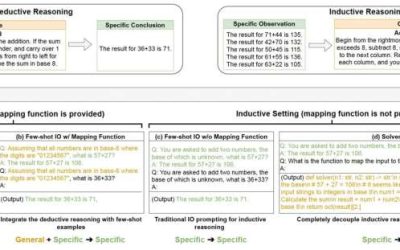Researchers at University of North Carolina at Chapel Hill and University of Maryland recently developed MyTimeMachine (MyTM), a new AI-powered method for personalized age transformation that can make human faces in images or videos appear younger or older,...
Computer Sciences
Shrinking AI for personal devices: An efficient small language model that could perform better on smartphones
Large language models (LLMs), such as Open AI's renowned conversational platform ChatGPT, have recently become increasingly widespread, with many internet users relying on them to find information quickly and produce texts for various purposes. Yet most of these...
Optoelectronic device mimics human vision for diversified in-sensor computing
To make sense of the world, most humans rely in great part on their vision. Recent research suggests that the human visual system is hierarchical, meaning that it processes information on different levels, ranging from the low-level processing of sensory stimuli to...
Computational framework simplifies synthesized motions for human characters in 3D environments
Artificial intelligence (AI) systems have become increasingly better at synthesizing images and videos showing humans, animals and objects. The automated generation of videos in which human characters engage in specific activities could have various valuable...
Alternative model can identify fake news by processing both textual and visual data
The advent of the internet has changed the way people access and share information, making it easier for malicious individuals to spread biased, unreliable or false news. Recent technological advances, including artificial intelligence (AI) models that can generate...
A new model for symbolic music generation using musical metadata
Artificial intelligence (AI) has opened new interesting opportunities for the music industry, for instance, enabling the development of tools that can automatically generate musical compositions or specific instrument tracks. Yet most existing tools are designed to be...
Exploring the fundamental reasoning abilities of LLMs
Reasoning, the process through which human beings mentally process information to draw specific conclusions or solve problems, can be divided into two main categories. The first type of reasoning, known as deductive reasoning, entails starting from a general rule or...
Flexible multi-task computation in recurrent neural networks relies on dynamical motifs, study shows
Cognitive flexibility, the ability to rapidly switch between different thoughts and mental concepts, is a highly advantageous human capability. This salient capability supports multi-tasking, the rapid acquisition of new skills and the adaptation to new situations.
Why editing the knowledge of LLMs post-training can create messy ripple effects
After the advent of ChatGPT, the readily available model developed by Open AI, large language models (LLMs) have become increasingly widespread, with many online users now accessing them daily to quickly get answers to their queries, source information or produce...
Lightweight neural network enables realistic rendering of woven fabrics in real-time
Recent advances in the field of artificial intelligence (AI) and computing have enabled the development of new tools for creating highly realistic media, virtual reality (VR) environments and video games. Many of these tools are now widely used by graphics designers,...










